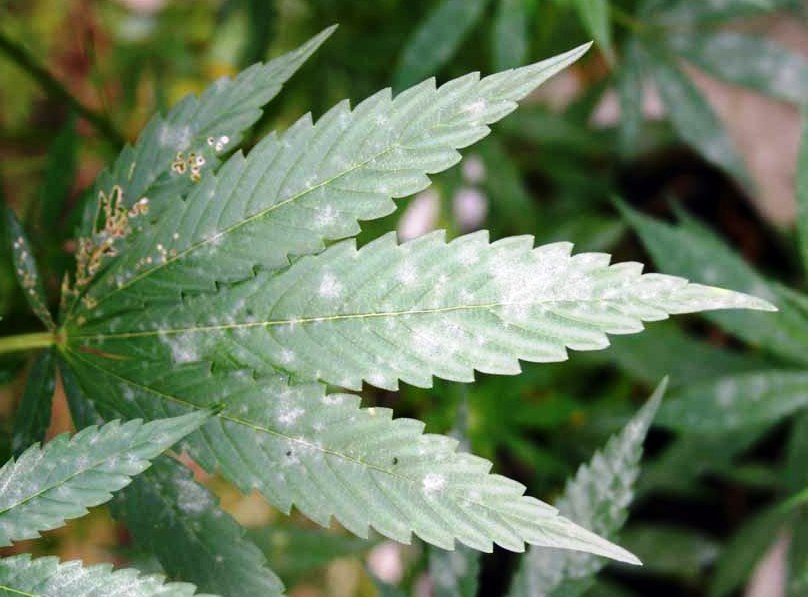So you’ve got your seeds in the ground, and your cannabis plants are beginning to thrive under the summer sun. June is a great time to be growing outdoors—the days are long, the conditions are warm, and growth is often explosive. But June is also when you need to know what to do when pests, mold, mildew, and nutrient issues start to creep in. The difference between a good harvest and a great one? Preventative care.
This article is your guide to protecting your outdoor cannabis plants in June—before problems show up. Whether you’re growing feminised strains like Bruce Banner #3 and Alien Moonrocks, or autoflowers like Black Orchid Auto and Purple Haze Auto, these tips will keep your grow on track.
Why Prevention is Better Than Cure (Especially Outdoors)
Outdoors, you’re at the mercy of nature. Rain, wind, insects, birds, pathogens, and more—none of it asks for permission. And once an issue shows up, it can spiral fast.
That’s why seasoned growers build preventative strategies into their routine. You don’t want to wait until you see powdery mildew to start spraying. You don’t want to see chewed-up leaves before thinking about pest control. Prevention isn’t just about playing it safe. It’s about protecting your investment—your time, effort, and your seeds.
Let’s break down the common threats and how to head them off before they take hold.
Outdoor Cannabis Threats to Watch For in June
1. Pests
- Aphids, whiteflies, and thrips love the fresh new growth on cannabis plants.
- Caterpillars can destroy colas in days if left unchecked.
- Spider mites thrive in hot, dry conditions and are hard to see until damage is done.

2. Fungal Infections
- Powdery mildew thrives in fluctuating humidity and poor airflow.
- Botrytis (bud rot) sneaks in through rain and dew, especially in dense buds.
- Root rot can start when soil stays wet too long, especially in containers.

3. Environmental Stress
- Heatwaves can lead to leaf curl, sunburn, and nutrient lockout.
- Sudden storms or high winds can break branches and weaken plants.
- Overwatering or underwatering is common with outdoor grows in unpredictable weather.

Feminised vs. Auto: Who’s at Greater Risk?
Here’s the thing—both types need protection, but in slightly different ways.
Because these plants have longer lifecycles and grow much larger, they’re more vulnerable to mold and pest infestations over time. On the flip side, they’re also stronger and more resilient—they can handle aggressive pruning and treatment if needed.
Example: Bruce Banner #3 Fem is a beast of a plant. It grows tall, wide, and dense. Without good airflow, it’s a magnet for mildew in late summer.
Autos are on a clock. They have a short life and don’t have time to recover from major problems. That makes early prevention even more critical.
Example: Black Orchid Auto is gorgeous and resin-heavy, but it’s compact and fast—meaning any pest issue needs to be stopped before it starts. You won’t get a second chance.
Top 7 Preventative Care Tactics for June
1. Improve Airflow and Space
- If your plants are in the ground, give them at least 1 meter of spacing on all sides.
- In containers, keep them off the ground using pot stands or bricks to promote air circulation underneath.
- Prune lower branches and excess fan leaves to prevent humidity pockets.
- Consider using low-stress training (LST) to open up the canopy.
This is especially important for strains like Alien Moonrocks Fem, which grows dense and resinous—ideal conditions for mold if airflow is poor.
2. Apply Organic Foliar Sprays (Before Problems Start)
Prevention is all about consistency. Foliar sprays should be used on a weekly schedule, especially in the early vegetative phase.
- Neem oil: A go-to for repelling pests and reducing fungal spores. Mix with a mild soap and spray in the early morning or late evening.
- Potassium bicarbonate: Helps prevent powdery mildew and boosts leaf health.
- Silica: Strengthens cell walls, making plants more resistant to both pests and heat.
Use these lightly with autos like Purple Haze Auto, as heavy oils can sometimes stress smaller plants in direct sun. Apply with caution and avoid flowering plants.
3. Water Smarter
- Water early in the morning, so roots have moisture before heat sets in.
- Avoid overhead watering—target the base of the plant.
- Don’t water again until the top 3–5 cm of soil is dry.
- Use mulch or straw to help retain moisture and suppress weeds.
This is key for autos in containers. Overwatering slows them down—and they don’t have time to recover.
4. Use Companion Planting
Nature has allies. Plant herbs and flowers nearby that naturally repel pests:
- Basil and dill help ward off aphids and beetles.
- Marigolds deter whiteflies, thrips, and nematodes.
- Lavender can confuse pests and attract beneficial pollinators.
These low-maintenance helpers protect your cannabis and look good doing it.
5. Introduce Beneficial Insects
Not all bugs are bad. Some are your best line of defense:
- Ladybugs eat aphids and soft-bodied pests.
- Green lacewings consume spider mites and whiteflies.
- Predatory mites are perfect for fighting off spider mite infestations.
Release them early in the season, when pest populations are low. It’s better to be proactive than to fight an infestation later.
6. Boost Soil Biology
A healthy root zone is your first line of defense. Use:
- Mycorrhizal fungi to enhance nutrient uptake and root strength.
- Compost teas to build beneficial microbial life and suppress pathogens.
- Worm castings to improve soil structure and feed your plants naturally.
This sets up your plants—especially photoperiods like Bruce Banner #3 Fem—for long-term health through veg and bloom.
7. Stay Observant: Daily Walk-Throughs
Every successful grower knows this truth: you have to know your plants.
Spend time with them every day. Look at the undersides of leaves. Check the base of the stems. Watch for odd curling, yellowing, spotting, or webbing.
The earlier you catch something, the easier it is to fix. The five minutes you spend each morning could save your harvest.
Tailored Preventative Tips for Your Featured Strains
- Grows big, thick, and lush—focus on airflow and fungal prevention.
- Loves nutrients, so keep your root zone healthy to avoid deficiencies.
- Heavy trichome production = higher risk of botrytis if it gets wet.
- Prune early and ensure plenty of air through the canopy.
Black Orchid Auto (Cannabis Cup Winner 2025)
- Responds well to gentle organic sprays in veg but avoid foliar in bloom.
- Mulch around the base to regulate moisture in smaller containers.
- Can stretch, so top-heavy plants need wind protection outdoors.
- Naturally resistant to pests but still benefits from early neem or companion planting.
When to Treat and When to Let It Ride
Not every yellow leaf is a crisis. Outdoors, cannabis will encounter environmental stress. That’s normal. What matters is whether the plant bounces back.
Don’t go overboard with spraying or feeding at the first sign of change. Evaluate the pattern. If one plant is struggling while others thrive, isolate it and observe. If a few leaves show wear but the new growth is strong, stay the course.
The Bigger Picture: Prevention Protects Your Yield
In cannabis cultivation, everything affects everything. A few aphids in veg can lead to stunted flowers. A missed watering in a heatwave can trigger stress that reduces terpene production. Mold late in flower can ruin an entire cola—or the entire crop.
Prevention isn’t paranoia. It’s preparation. And in June, it’s essential.
Want Genetics That Can Handle the Outdoors?
All the prevention in the world can’t save a weak genetic line. That’s why we test and recommend strains that hold up in real-world conditions.
Browse our top-performing seeds this season:
- Bruce Banner #3 Feminised – Big, bold, and built for the outdoors.
- Alien Moonrocks Feminised – Unique profile and structure with strong resistance.
- Black Orchid Auto – Quick to finish, easy to train, and beautifully potent.
- Purple Haze Auto – Classic lineage with a modern twist—fast, strong, and stunning.
You can find them all at www.originalsensible.com—along with expert advice and real grower reviews.
Final Word
June is the month when your plants hit their stride—but also when trouble can quietly start to brew. Don’t wait for pests or disease to force your hand. A simple, consistent preventative routine can mean the difference between disappointment and a heavy, fragrant harvest.
Take care of your plants, and they’ll take care of you. That’s the kind of grower’s wisdom that never goes out of season.







